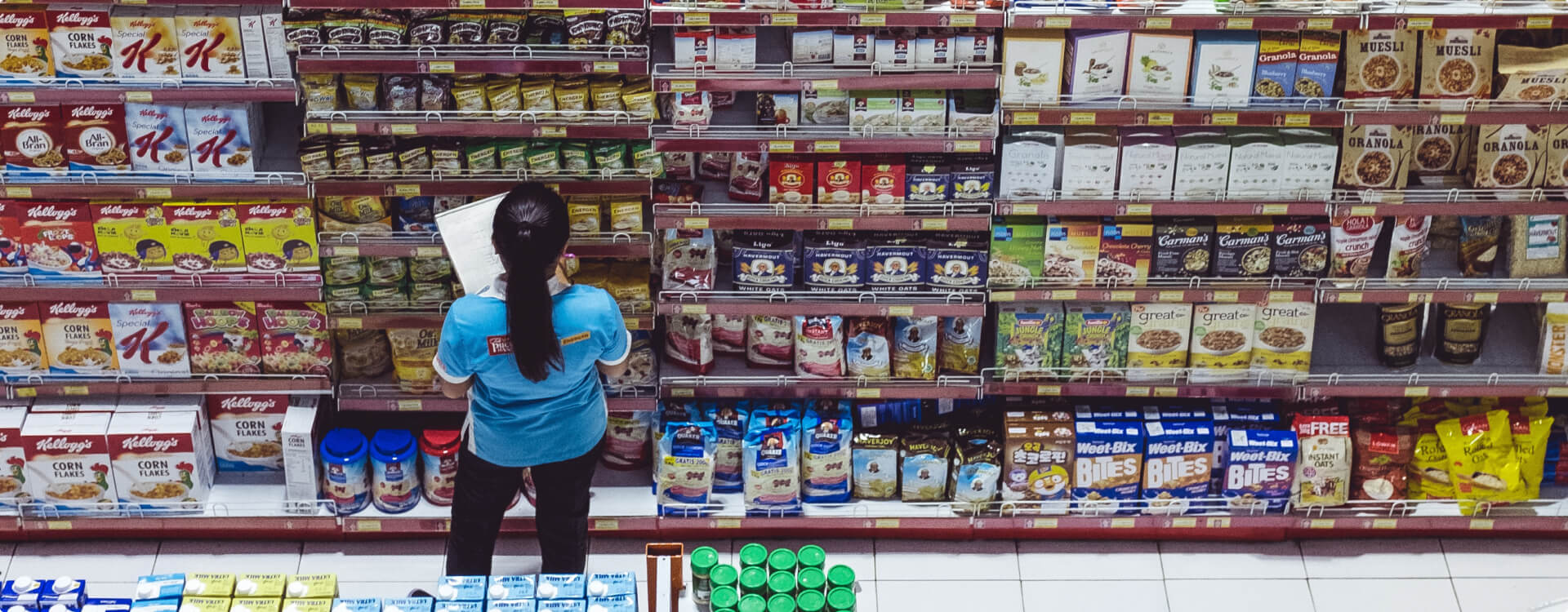As computer vision is becoming increasingly sophisticated, it brings business benefits to a wide variety of industries. From defect detection to loss prevention, computer vision is a powerful tool with the potential to improve processes and results in many contexts. But before we dive into the use cases of computer vision, let’s define what it is.
What is computer vision?
Computer vision is often confused with Artificial Intelligence (AI), but it is not quite the same thing. Computer vision is the ability of computers to “see”, analyze and understand images or videos. AI, on the other hand, is when computers perform tasks that usually would require human intelligence. Simply put, computer vision is the “human eyes” of the computer, while AI is the “human brain.” One could also say that computer vision is AI applied to the visual world.
Visual data that computer vision can process include images and videos captured by cameras, 3D scanners, and medical scanners. Today, computer vision is sophisticated enough to outperform the human eye.
In this article, we’ll look at the business applications of computer vision solutions and how they can improve safety and efficiency – while lowering costs – in 6 different industries.
1. Retail
Computer vision optimizes processes and improves the customer experience, both in brick and mortar stores and online.
Improved operations and reduced costs: Computer vision allows retailers to speed up processes such as inventory management, payments, and compliance. Automated planogram analysis can save time, reduce space wastage and suggest the most optimal shelf placement for each product.
Increased security and reduced shrinkage: Shoplifting and employee theft are costing retailers a staggering $100 billion globally every year. Computer vision can spot suspicious activities and provide heat maps of shoppers moving around the store – real-time data that helps ensure health and safety.
Improved customer experience: Computer vision can improve in-store marketing in several ways. Facial recognition enables retailers to identify regular customers and provide personalized service. Coupons and offers can be personalized, and products can be suggested based on previous purchases.
Learn more about Chooch’s Retail AI solutions.
2. Healthcare
Computer vision helps medical professionals save time and optimize workflows. A growing number of doctors are using it to diagnose their patients and prescribe the right treatments.
Increased patient safety: Computer vision improves diagnostic accuracy, reducing the number of unnecessary procedures and expensive therapies. It can detect illnesses that can otherwise be difficult to identify, such as neurological illnesses. Increased accuracy and quicker diagnosis mean lower costs, both for the patient and the care provider. Facial authentication prevents misidentification of patients and increases the security of medical facilities.
Increased operational efficiency: Doctors traditionally spend a lot of their time analyzing images and reports. Computer vision frees up their time so that they can spend it with patients instead. This means quicker care at a lower cost. Computer vision can also be used to monitor operating room procedures and provide automatic surgical logs. When activities such as anesthetization, chest closure, and instrument usage are logged, it reduces errors and increases efficiency.
Medical imaging and measuring blood loss: Computer vision is used in medical imaging, where a recent example is the detection of COVID-19 in lung X-ray images with 98% accuracy. The Orlando Health Winnie Palmer Hospital for Women and Babies uses computer vision to measure blood loss during childbirth. Before, it was impossible to know how much blood a mother was loosing. But with computer vision, images of surgical sponges and suction canisters can be used to measure blood loss.
Contact us about healthcare AI
3. Manufacturing
In the industrial sector, human error can cause dangerous situations and expensive mistakes. Computer vision efficiently improves the accuracy, quality, and speed of industrial operations.
Defect Detection: Using computer vision for flaw detection in manufacturing. With fast inference speeds using edge AI and flexible training, computer vision can be applied across many manufacturing processes.
Increased security in remote locations: Unmanned and remote locations such as oil wells can be monitored with computer vision. Facial authentication confirms the personnel’s identity to ensure only the right people have access to restricted areas.
Improved workplace safety: Computer vision can detect required gear in images and video, to ensure that employees wear protective gloves and hard hats. This reduces the risk of workplace injuries and legal costs while improving employee safety.
Predictive maintenance: Computer vision is increasingly employed to monitor the status and health of critical infrastructure. If a plant or tool fails, it can lead to costly delays. Computer vision enables early discovery and preventive measures – saving time and money.
Learn more about Chooch’s AI Vision solutions for manufacturers.
4. Safety and security
Having cameras monitoring high-security facilities is not enough; if there is no way to analyze the imagery, it is of no use. Computer vision solves this, enabling advanced analysis of the data from surveillance technology.
Facial authentication protects restricted areas: Adding computer vision and biometrics replacing passwords, badges, PINs prevents the wrong people from getting access to high-security facilities and classified information.
Compliance with regulations: Visual AI can monitor if workers wear protective clothing and set off alerts when non-compliance is detected. This means lower insurance, reduced costs, and less risk.
Virus mitigation: The risk of spreading infectious diseases in public spaces can be reduced with computer vision that detects coughing, mask-wearing, and even fevers in the era of Covid-19
5. Digital media and entertainment
Media industry players such as publishers, advertisers, and brands are increasingly using computer vision to improve their businesses.
Automated image enrichment: Adding metadata to images, and tagging new photos, reduces the need for manual labor. Cloud deployment of AI to identify people and objects and deep tagging also saves time while enhancing inventory value.
Quality control and compliance with regulations: On social media platforms and other websites, computer vision helps with image analysis and quality control. It alerts editors about blurred images, nudity, deep fakes, and banned content.
Customized advertising: Vendors can benefit from contextual ad placement, and images and objects in videos can be tagged to increase searchability.
6. Geospatial AI
The amount of imagery derived from satellites and UAVs is growing at an explosive rate. From agriculture, urban planning, and disaster relief to insurance, conservation and earth science, computer vision provides the means to analyze and use the imagery.
Increased public safety with change detection: Computer vision trained to identify wildfires, water level changes, and industrial activity with high accuracy increases public safety. Alerts can be sent to decision-makers, enabling efficient and timely action.
Efficient earth observation: Computer vision allows for the analysis of electro-optical, infrared, synthetic aperture radar, from any source. Deep-learning computer vision can monitor everything from urban development and climate change to population dynamics and agriculture, helping us understand the world we live in.
Improved environmental epidemiology: As COVID 19 continues to affect every aspect of our lives, the study of environmental and exposure factors in epidemics has never been more top-of-mind. Computer vision provides the tools for collecting and processing a wide range of data points relevant in research and prevention work.
Learn more about AI Vision for Geospatial applications.
Conclusion
In a world where the amount of visual data is exploding, computer vision has a wide range of use cases. The technology improves operations efficiency while increasing safety and revenue, helping businesses collect, analyze, and use the images and video unprecedentedly.
Chooch offers AI Vision technology solutions that can be customized for your specific business needs. If you would like more information on how we can help, contact us.





